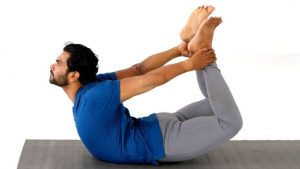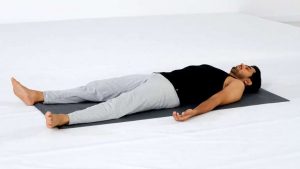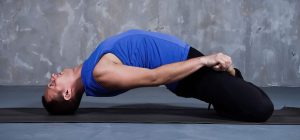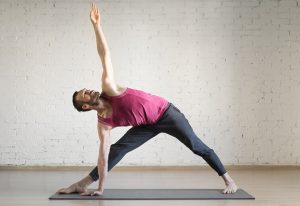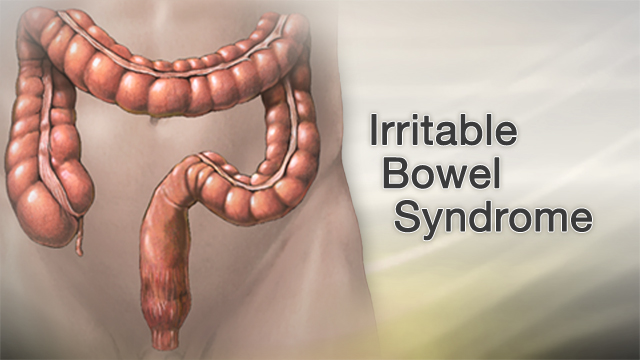
IRRITABLE BOWEL SYNDROME – YOGA ASANAS
- January 4, 2023
- Posted by Dr. Vaidya Karanvir Singh
- 0 Comment(s)
Table of Contents
WHAT IS IRRITABLE BOWEL SYNDROME?
Irritable bowel syndrome is a disorder in which the stomach and intestines are affected. It is a common disorder of gastrointestinal tract but causes a lot of discomfort. Abdominal pain, diarrhea, constipation, etc. are some of the common symptoms of it. But the symptoms are different among different individuals. Irritable bowel syndrome is a chronic disorder and it takes a long time to manage the symptoms. It is also known as spastic colon, irritable colon and mucous colitis. In most of the patients, the symptoms are not severe and can be managed by some dietary and lifestyle modifications and stress management. However, severe cases require counseling and medications.
WHAT ARE THE CAUSES OF IRRITABLE BOWEL SYNDROME?
There has not been found exact cause for the occurrence of IBS. But researchers found out to be due to the oversensitive immune system. However, there are various combination of factors which play a role in its manifestation:
- Bacterial or viral infection of the digestive tract called gastroenteritis
- Disturbed muscle contractions of the intestine, either there are strong contractions or weak contractions
- Physical trauma
- Stressful conditions in the early life
- Changes in the composition of gut microbes
- Poor coordination between the brain and intestines
- Oversensitivity of nerves in the digestive system
TRIGGERS OF IRRITABLE BOWEL SYNDROME
There are some factors which trigger the onset of irritable bowel syndrome. Following are the factors:
- Intolerance to certain types of foods – some foods like dairy products, wheat, beans, milk, carbonated drinks, etc. can lead to onset or worsen the symptoms of IBS
- Stress – it worsens the symptoms of IBS
RISK FACTORS OF IRRITABLE BOWEL SYNDROME
Here are some of the factors which make a person more prone to Irritable bowel syndrome:
- Having a genetic predisposition of IBS
- Females are more prone in comparison to males
- IBS mostly occurs under the age of 50 years
- Excessive intake of antibiotics
- Suffering from depression
- Food poisoning
- Emotional stress
- Any infection of the digestive tract
WHAT ARE THE SYMPTOMS OF IRRITABLE BOWEL SYNDROME?
Irritable bowel syndrome is associated with the following signs and symptoms:
- Cramps in lower half of abdomen
- Excessive formation of gas
- Abdominal bloating
- Abnormal bowel movements
- Constipation or diarrhea
- Presence of mucus or blood in stool
- Rectal bleeding
- Nausea or vomiting
- Rapid weight loss
- Anemia
COMPLICATIONS OF IRRITABLE BOWEL SYNDROME
Irritable bowel syndrome is associated with the following complications:
- Anxiety
- Depression
- Mood swings
- Bipolar disorder
- Decreased work productivity
- Poor quality of life
HOW YOGA CAN BE HELPFUL IN TREATING IRRITABLE BOWEL SYNDROME?
Yoga is an ancient practice which is done to keep one healthy – physically as well as mentally. As it involves various stretching exercises, it increases blood circulation in the concerned area and provides proper nourishment to the affected part. It is found very beneficial in treating patients of irritable bowel syndrome.
Following are the yoga asanas which are recommended in irritable bowel syndrome:
DHANURASANA
Dhanu means bow and asana means body posture. In dhanurasana, the shape of the body is made like that of a bow. The pose should be performed 4-5 hour after meals. The best time is of early morning.
How to do it:
- Lie in the stomach with the feet apart.
- Then fold the knees and take your hands backwards and hold the ankles.
- Breathe in and lift the chest up from the ground. Pull the legs upwards and more towards the back.
- Keep the body posture stable and see forward. Pay attention to the breath.
- Maintain posture for 15-20 seconds and bring the legs and chest gently to the ground.
Contraindications:
- Neck injury
- Hernia
- Hypertension or hypotension
- Lower back pain
- Migraine
- Recent abdominal surgery
SHAVASANA
Shava means corpse and asana means body posture. Shavasana is also known as corpse pose. This asana is a rest and relaxation posture. It is usually performed at the end of a yoga session. It helps in deep healing of the body.
How to do it:
- Lie flat on the back without any cushions or props. Close your eyes.
- Keep the legs apart comfortably and let the feet and knees relax.
- The arms should be kept aside with a little distance from the body. Keep the palms open and facing upwards.
- Breathe slowly and gently and slowly relax your entire body. Surrender the whole body and let go everything. But do not fall asleep.
- After 10-20 minutes, slowly roll onto the right side and remain in that position for a minute. Then with the help of the right hand, sit up into a seated posture known as sukhasana.
MATSYASANA
Matsyasana is the fish pose asana. If this asana is carried out in water, the body will float easily like a fish.
How to do it:
- Lie on back with feet together and hands relaxed.
- Place the hands under the hips and bring the elbows close to each other.
- Lift the head and chest up while breathing in.
- When the chest is elevated, lower the head backwards and touch floor with the top of the head.
- Hold the pose as long as a person feels comfortable.
Contraindications:
- High or low blood pressure
- Migraine
- Insomnia
TRIKONASANA
Trikonasana is called triangle pose also. It leads to stretching of legs and torso. It opens up chest space and promotes effect of deep breathing.
How to do it:
- Stand with the feet wide apart. Then stretch the right foot outwards while keeping the leg closer to the torso.
- Keep the feet firmly on the ground and balance the weight equally on both the feet. Then bend the right arm and touch the ground. Meanwhile, the left arm goes up.
- The waist should be kept straight. The body should bend sideways and not forwards and backwards.
- Repeat the same procedure on the other side also.
Contraindications:
- Neck pain
- Headache
- Insomnia
- Pregnancy
- Diarrhea
PAVANMUKTASANA
Pavan means air, mukta means release and asana means body posture. So pawanmuktasana is a wind-relieving asana. Both mind and stomach are connected. Pawanmuktasana helps in relieving constipation and gas.
How to do it:
- Lie on the back with joined feet and arms beside the body.
- Bring the right knee towards the chest and press the thigh with the clasped hands.
- Then bring the left knee towards the chest. Press both the knees against the stomach with the clasped hands.
- Lift the head and chest off the floor. Hold this position for a few minutes. Then relax.
Contraindications:
- Heart problem
- Hernia
- Slip disc
- Problem in testicles
- Menstruation
- Neck problem
- Back problem

Dr. Vaidya Karanvir Singh is the younger Vaidya in Chandigarh Ayurved & Panchakarma Centre. He is the fourth generation in his family who is practicing as a general consultant in Ayurved & Panchakarma treatment at Chandigarh. In his practice, he had treated more than 1 Lakh Plus patients worldwide.


